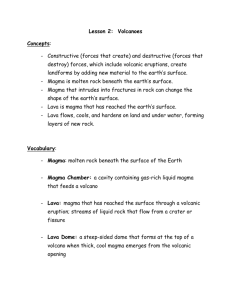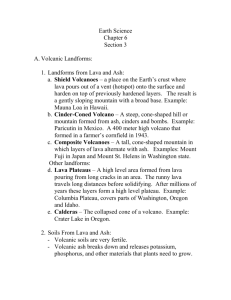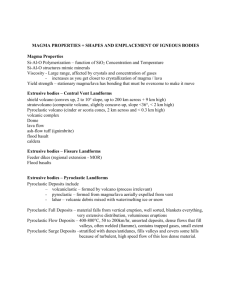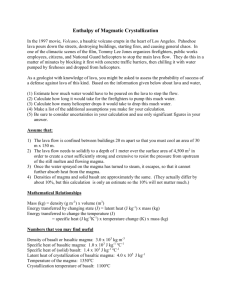Capture Sheet Volcanic Hazards
advertisement
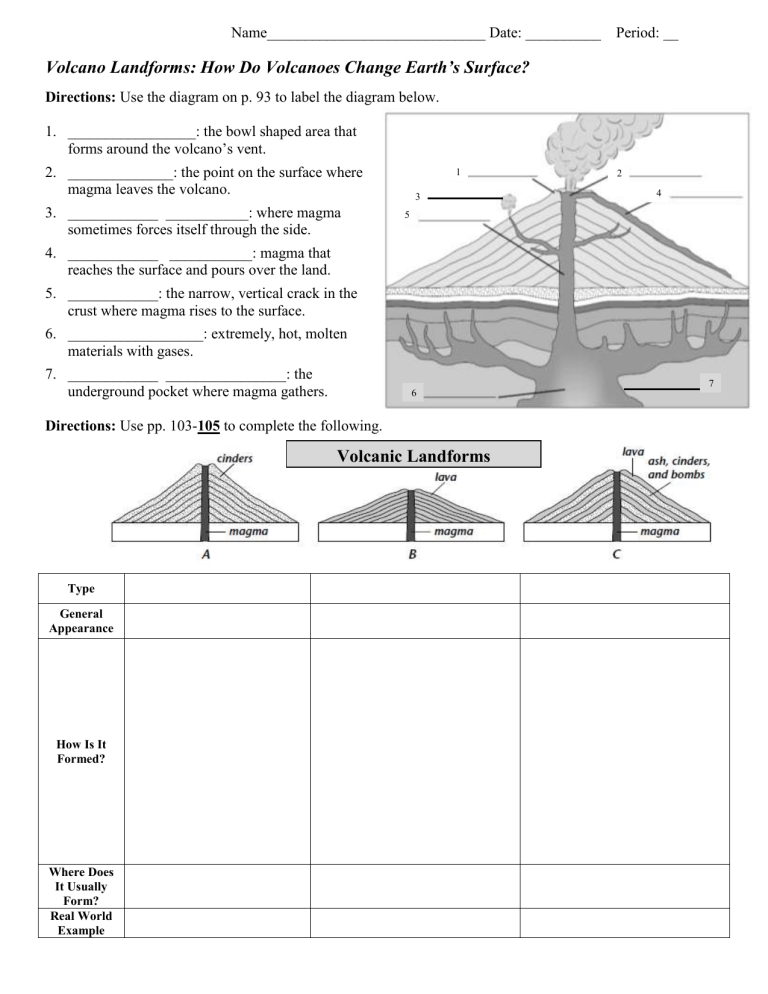
Name_____________________________ Date: __________ Period: __ Volcano Landforms: How Do Volcanoes Change Earth’s Surface? Directions: Use the diagram on p. 93 to label the diagram below. 1. _________________: the bowl shaped area that forms around the volcano’s vent. 2. ______________: the point on the surface where magma leaves the volcano. 3. ____________ ___________: where magma sometimes forces itself through the side. 3 1 2 . . . 5 4 . . 4. ____________ ___________: magma that reaches the surface and pours over the land. 5. ____________: the narrow, vertical crack in the crust where magma rises to the surface. 6. __________________: extremely, hot, molten materials with gases. 7. ____________ ________________: the underground pocket where magma gathers. 7 6 . Directions: Use pp. 103-105 to complete the following. Volcanic Landforms Type General Appearance How Is It Formed? Where Does It Usually Form? Real World Example . Directions: Use pp. 104-105 to complete the following. Other Landforms from Ash and Lava Type Lava Plateaus Calderas General Appearance How Is It Formed? Where Does It Usually Form? Example Directions: Use pp. 106-107 to complete the following. Landforms from Magma Type Volcanic Necks, Dikes, Sills Batholiths Dome Mountains General Appearance How Is It Formed? Where Does It Usually Form? Example Concept Bank 1. High level area formed by repeated lava flows 2. Formed by lava flows alternating with explosive eruptions. 3. Cone-shaped mountain formed from ash, cinders, and bombs 4. Hole left by collapse of volcanic mountain 5. Gently sloping mountain formed by repeated lava flows. 6. Result from quiet eruptions. 7. Very steep mountains. 8. Form from many thin layers of lava. 9. Massive rock when large body of magma cools inside crust. 10. Magma hardens in pipe and then volcano erodes away. 11. Forced between rock layers. 12. Forced through (across) rock layers. 13. Magma forces rock to bend up; when rock erodes, a dome is left.






